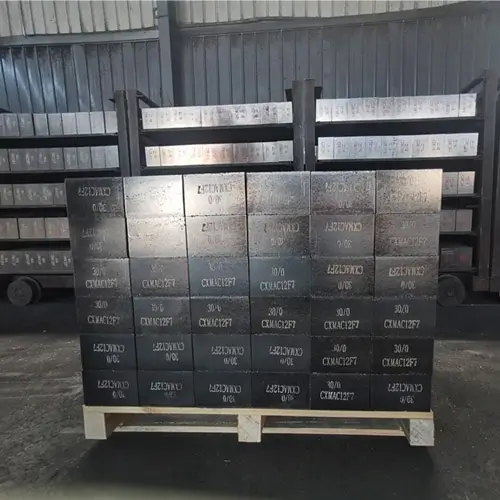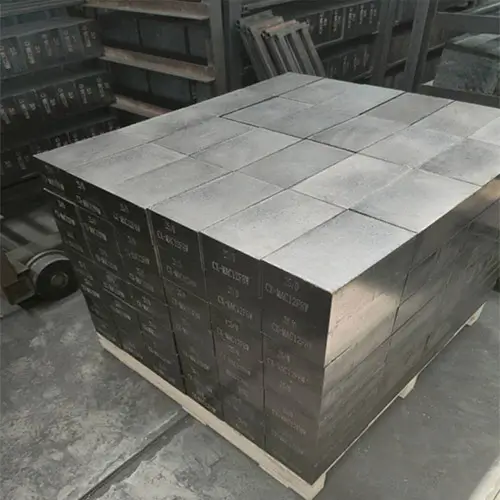Magnesium carbon bricks due to its outstanding properties will continue to develop in the field of iron and steel metallurgy, for this reason, through the summary and analysis of its research status quo, the next step in the development of magnesium carbon bricks, the direction and focus of the refining:
Magnesium carbon bricks due to its outstanding properties will continue to develop in the field of iron and steel metallurgy, for this reason, through the summary and analysis of its research status quo, the next step in the development of magnesium carbon bricks, the direction and focus of the refining:
(1) the traditional magnesium carbon bricks through the particle gradation, magnesium sand microstructure and magnesium carbon bricks in general, the structure of the design, optimisation, can continue to enhance or give full play to its performance.
(2) The research of high-performance antioxidants, especially the research and synthesis of non-metallic antioxidants with high oxygen affinity and low expansion and low stress will be an important way to improve the performance of magnesium carbon bricks in the future.
(3) In the process of low carbonisation of magnesium-carbon bricks, the microfine and crystallisation of carbonaceous components as the key way to effectively improve their structural stress and resistance to slag permeability will continue to receive attention and development.
Combined with the research on magnesium carbon bricks and the current status of research at home and abroad, the future research direction of magnesium carbon bricks is as follows:
1.Refinement of traditional magnesium-carbon bricks
Magnesium carbon brick development although has been more than 30 years, and also in the continuous research and improvement, but magnesium carbon brick in the use of the process of the damage shown in the situation, the structure of the work surface, etc. shows that magnesium carbon bricks do not give full play to the performance of their respective components, and did not achieve the maximum effect of the use of magnesium carbon bricks; LF refining slag line magnesium carbon bricks exposed magnesium sand particles on the work surface, the extremely low strength and loose structure that illustrates this point. Through years of tracking research found that the same is used for LF refining ladle slag line magnesium carbon bricks, magnesium sand crystallisation, impurity distribution, grade and the overall structure of the different matching, the service life of magnesium carbon bricks is completely different, the working surface structure also varies greatly. Therefore, how the raw materials, the interface structure between crystals and particles, particle grading, etc.: magnesium carbon brick research status and development trend of the line of refined research, so that the magnesium carbon brick in the structure, composition and stress and other multi-dimensional well-matched, which is very important for the traditional magnesium carbon brick upgrading and large-span innovation, but also will be the magnesium carbon brick greatly improve the performance of one of the key research directions.
2.High performance and multifunctional antioxidants
Antioxidant is a very important component of carbon composite materials, its performance is directly related to the performance of magnesium carbon bricks; the emergence of high-performance antioxidant will greatly enhance the performance of magnesium carbon bricks or promote the replacement of magnesium carbon bricks, so how to through the composition, structural control, as well as new processes, new technologies to prepare a high antioxidant performance and high-temperature strength antioxidant, will be the main development of the future magnesium carbon bricks One of the directions. For low carbon magnesium-carbon bricks, in view of its low carbon content and structural peculiarities, its antioxidant, in addition to having the function of ordinary magnesium-carbon bricks antioxidant, should also have its volumetric stability at high temperatures, volumetric stability of oxidation products and substrate reaction process, which is what is currently lacking in many conventional antioxidants. In AlSiC, AI ℃, Al4C3N and other carbides in the anti-oxidation performance of the study, found that such materials not only has a better function of anti-oxidant, and its oxidation process can promote the structure of magnesium-carbon bricks densification, at the same time, it also has a certain degree of resistance to molten steel and slag wetting performance, which is very important for low-carbon magnesium-carbon bricks. Therefore, for low carbon magnesium carbon bricks, how to prepare a new type of non-metallic antioxidant through the structure, component design, etc., to achieve the graphite-like function with resistance to slag permeability at the same time of oxidation resistance, which will be the most promising research direction for the new generation of antioxidants.

3.Low-carbon magnesium-carbon brick bonding agent research
Traditional magnesium-carbon bricks with high carbon content, can form a continuous carbon network, the requirements of the binding agent is not high; and low carbon magnesium-carbon bricks with low carbon content, it is difficult to form a contact network, which is the reason why the performance of low carbon magnesium-carbon bricks is relatively poor compared with traditional magnesium-carbon bricks. Therefore, the binding agent for low carbon magnesium carbon brick should have its special properties in addition to the characteristics of the traditional binding agent. The ideal binding agent for low carbon magnesium-carbon bricks should be easy to distribute uniformly, and the carbon component should have a certain stability after carbonisation. Therefore, there is still room for further research on the molecular structure, branched chain structure, viscosity, graphitising ability of the binding agent, and the organic combination of the carbonised structure and the anti-oxidation component, in order to realise its role as a source of magnesium-carbon bricks’ shaping and strength, and at the same time, enhance the anti-oxidation ability of the carbon bonding network or give the carbon bonding network a certain amount of stress buffering ability, and so on.
4.Stress decomposition and structural optimisation of low carbon magnesium-carbon bricks
Traditional magnesium-carbon bricks have negligible structural stresses due to high graphite content; while for low carbon magnesium-carbon bricks it cannot be ignored, which has not attracted attention in the current research on low carbon magnesium-carbon bricks. The expansion coefficient of magnesium sand particles is large relative to graphite, which is the fundamental reason for the large structural stress of low-carbon magnesium-carbon bricks. Therefore, how to alleviate the expansion stress of the particles through the matching design of particle gradation, particle interface structure, matrix structure, etc., and then realise the matching of low carbon magnesium-carbon bricks in multiple scales such as structure, composition and stress, will be the direction of in-depth research on stress decomposition of low carbon magnesium-carbon bricks. Among them, matrix assumes the role of resisting the penetration and erosion of slag as well as buffering the stress of particle expansion, which has a greater weight in influencing the performance of low-carbon magnesium-carbon bricks, and is one of the main directions for stress relief and structural optimisation. Matrix optimisation can be fine-matched from the matrix’s physical phase distribution, fine powder particle size, interfacial reaction and pore structure, so that the matrix can give full play to its performance, which is a neglected and unrecognised area in the current research of low-carbon magnesium-carbon bricks.
FAQ:
What are mag carbon bricks used for?
MgO-C (magnesia-carbon) refractory bricks are widely used in steel industry, the primary consumer of refractory linings, such as basic oxygen furnaces, electric arc furnaces, and ladle furnaces.
What are the properties of MgO-C bricks?
MgO-C bricks are composed of magnesia clinker, flake graphite, antioxidants, resin components, etc., and have high resistance to corrosion, spalling, and slag penetration thanks to the characteristics of their constituents.
How do you make magnesia carbon bricks?
The raw materials are prepared in a predetermined proportion and mixed in a strong sand mixer. The order of feeding is magnesia aggregate – Binder – graphite – fine powder and additives, and the mixing time is 15 – 45 minutes. In order to mix evenly, phenolic resin is usually heated to 35-45 C before mixing.

